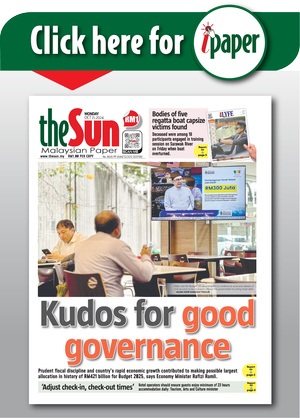PETALING JAYA: Health Minister Datuk Seri Dr Dzulkefly Ahmad has assured that using the Employees Provident Fund (EPF) Account 2 for the proposed Medical and Health Insurance Takaful scheme is entirely voluntary. However, economists warn that further depleting retirement savings is “a very bad idea” and could compromise an individual’s long-term financial security.
Economist Prof Geoffrey Williams said the EPF’s core function is to secure retirement savings, a role that becomes increasingly vital as Malaysia transitions into an aged society by 2040.
“By then, around 17% of the population, or nearly seven million people will be over the age of 60.
“Most will either stop working or have reduced income, yet face rising living costs, especially for healthcare. Using retirement funds now for insurance could worsen financial insecurity later in life.”
He also highlighted that almost 97% of EPF contributors already have inadequate savings, with half having less than RM10,000.
“There are seven million Malaysians with no formal retirement scheme at all, and only 8.8 million EPF members are currently active. The idea of depleting EPF savings further is a very bad idea.”
Williams stressed that EPF is a retirement fund, not a general-purpose social safety net.
“It’s not designed to function as a social insurance scheme (provider) and shouldn’t take on that role. The danger is turning the EPF into a general savings account, like what we saw during the pandemic withdrawals.
“The EPF is not an ATM. What’s next? Using it to pay for car insurance or even pet insurance?”
Williams also pointed out that EPF holds RM1.25 trillion in total funds, with about 15% or RM187.5 billion in Account 2.
He said even if only 1% is used, it amounts to RM1.875 billion potentially flowing to private insurance companies.
“It gives the impression that this is more of a patronage project benefiting insurers rather than a genuine attempt to fix healthcare financing.”
Williams proposed that the government develop a holistic and structured healthcare funding system that benefits all 30 million Malaysians.
“The ideal model is one in which both public and private healthcare services are available, but payments are made by the government. As the sole purchaser, the government would have greater control over prices, costs and quality.”
To finance such a system, he suggested introducing a 1% e-payments tax, which could generate up to RM28.8 billion annually.
“Alternatively, a ‘Malaysian Superfund’ similar to pension superfunds in other countries could be established to strengthen retirement financing.”
Echoing similar concerns, Universiti Teknologi Mara senior lecturer Dr Mohamad Idham Md Razak said economically, healthcare is best supported through pooled-risk systems, such as national health insurance or tax-funded programmes, rather than relying solely on individual savings.
He said while EPF can play a supplementary role, a strong social safety net ensures broader accessibility and prevents undue pressure on retirement funds.
“Retirement savings are designed for long-term security, whereas healthcare expenses are unpredictable.
“A more sustainable approach could involve separate mechanisms specifically for healthcare savings or enhanced public health coverage, ensuring that EPF balances remain intact for their primary purpose, which is retirement.”
Mohamad Idham also warned that for lower and middle-income earners, early EPF withdrawals may reduce their retirement savings over time due to lost compounding growth.
He urged policymakers to consider complementary measures, such as financial education or incentives to replenish withdrawn amounts, to help these groups maintain adequate retirement funds while addressing immediate healthcare needs.
“Providing flexibility for EPF contributors to use savings for health insurance could offer short-term benefits.
“But it’s important to balance this with long-term retirement security. A well-designed opt-in system, with clear guidelines on withdrawal limits, could help individuals make informed decisions without compromising their future financial stability.”
In June, the government proposed allowing EPF members to use Account 2 savings for monthly health insurance premiums, aiming to expand coverage as 32% of healthcare costs are currently paid out-of-pocket.









